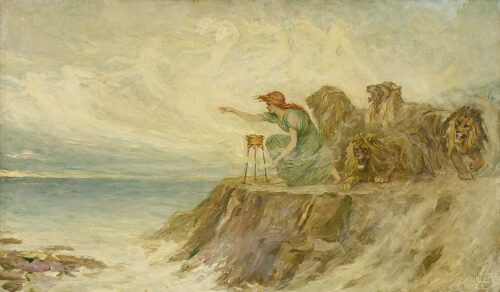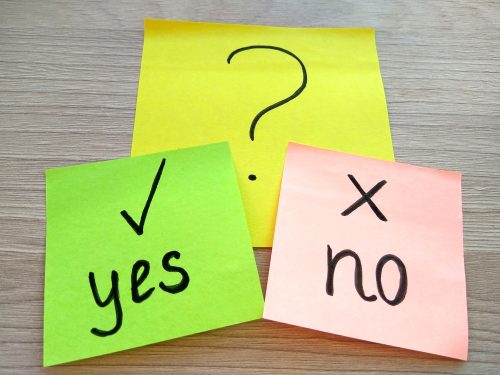Joy’s Rules for Choosing a Tarot Deck for The Magician’s Tools Beginning Tarot Class
I have been teaching beginning tarot for 22 years. I teach a unique method that systematizes the way intuitive tarot readers approach the cards, giving you specific guidelines for what to look for in the card image and how to approach an interpretation. By following my ten guideposts, you can start with any card in any tradition and work through the checklist to arrive at creative, inspired, fresh, and accurate interpretations.
My approach can be used to find meaning in any kind of image–from tarot to oracle decks to tea leaves to what’s happening outside your window right now, but because tarot is the most structured of these modalities mentioned, I ask that students start with a deck that utilizes tarot architecture (78 cards divided in 22 Major Arcana and 56 Minor Arcana, the Minor Arcana being subdivided into four suits, each suit consisting of pip cards numbered 1 (Ace) through 10, and a sequence of face cards; a deck with extra cards is fine) and follows these rules:
- You cannot use a Rider-Waite-Smith deck or direct clone (identical artwork). Decks that follow the Rider Waite Smith details, however strictly, but are not exact copies are acceptable, as are RWS inspired or derived (similar artwork). Why? This is a fabulous deck and the grandmother of illustrated tarot decks, but its revered place in tarot history has caused it to stiffen into a sequence of authoritative images. My goal is to help you release outside authority and find your inner truth, so by refusing to work with this deck, we can all relax and play and see what we discover (and then if you return to this deck later you will see it with fresh eyes and it will come to life for you).
- The deck must have illustrated or scenic pips. There are three general classes or lineages of tarot decks—unillustrated pips, moody or atmospheric pips, and illustrated or scenic pips. (See my post on Tarot Lineages for more information.) Scenic pips have scenes in which a person or animal is doing something or otherwise actively engaged in the environment–this is what you want. Why? Because scenic pips have the characters, setting, props, and actions of a scene from a story, and can be read like a picture book. Unillustrated pips are read using different techniques than I teach in this class (check out my class on Esoteric Tarot if you’d like to learn one way to read unillustrated pips), and although moody pips can be read using some of my techniques, they lack the detail to apply all, resulting in you not being able to practice all of the guideposts that I teach. That said, I know many people are drawn to the less detailed illustrations, so I have included a number of decks that are “scenic light”–a little more detail than a truly moody pip, but not so heavy on the scenes as to feel dense or overcrowded.
- The deck must have the suit emblems incorporated into the scene. Please get a deck that incorporates the wands, cups, swords and pentacles as part of the action of the scene. Having those suit emblems incorporated into the border of the card or hovering above the scene doesn’t count. Why? I teach a unique approach to numbers and numerology that was taught to me by my teacher but which I’ve never seen anywhere else. This approach depends on observing the unique way in which the suit emblems are integrated into the scene. Although the technique enlivens cards that follow this rule, cards that don’t end up feeling stale and flat.
- The deck can’t pull heavily from symbol systems or stories that you are not already familiar with. These symbol systems might include mythology, history, geography, or esoteric systems (such as qabalah, astrology, alchemy, etc). Why? I love decks that incorporate symbol systems, stories, and mythology. In fact, I’ve recommended several below because I think that the card illustrations stand on their own without requiring the added layers of meaning provided by a working knowledge of the system involved. But if you believe that you can’t understand the card without knowing the symbols or stories utilized, or if indeed the stories are integrated so completely that there can be no understanding of the card without that knowledge, then you will have to spend time learning not only my guideposts but also the unique world of the deck, and that doubles your work. Learn my system first, then when you are well-versed with my techniques, take on decks that require additional research.
- The deck does not have to follow the RWS symbolism. In the past students have misinterpreted my requirements to mean that the deck needs to follow the RWS images and related meanings. Not at all! I encourage as much variety as possible.
That said, there are hundreds and possibly thousands of decks that fit my rules. But, if you’d like a starting place, I’ve compiled this list of 50+ decks that fulfill my requirements. This list includes my personal favorite decks, decks that people in my classes enjoy using, and decks that I see show up a lot in the Denver Tarot Meetup.
# Deck Title, Publisher, Artist/Author, Publication Date
1 Alchemical Tarot: Renewed, Hermes, Robert Place, 2007
2 Ancestral Path Tarot, US Games, Julie Cuccia-Watts, 1996
3 Anna K Tarot, Llewellyn, Anna Klaffinger, 2013
4 Aquarian Tarot, US Games, David Palladini, 1970
5 Buckland Romani, Llewellyn, Lissanne Lake/ Raymond Buckland, 2001
6 Chrysalis Tarot, U.S. Games, Holly Sierra/ Toney Brooks, 2014
7 Crystal Visions, US Games, Jennifer Galasso, 2011
8 Darkana Tarot, Self-Published, Dan Donche/ Janden Hale, 2013
9 Deviant Moon, U.S. Games, Patrick Valenza, 2008
10 Dream Raven Tarot, Schiffer Books, Beth Seilonen, 2013
11 Dreaming Way Tarot, US Games, Kwon Shina/ Rome Choi, 2012
43 Dreams, Tarot of, U.S. Games, Ciro Marchetti, 2015
12 Druidcraft, St. Martin’s, Will Worthington/ Stephanie Carr-Gomm & Philip Carr-Gomm, 2005
13 Fenestra Tarot, US Games, Chatriya Hemharnvibul, 2006
14 Fountain Tarot, Self-Published, Jonathan Saiz/ Jason Gruhl/ Andi Todaro, 2015
15 Gilded Tarot, Llewellyn, Ciro Marchetti, 2004
16 Green Witch Tarot, Llewellyn, Ann Moura/ Kiri Ostergaard Leonard, 2015
17 Hanson-Roberts Tarot, US Games, Mary Hanson-Roberts, 1985
45 Hidden Realm, Tarot of the, Llewellyn, Julia Jeffrey/ Barbara Moore, 2013
18 Hudes Tarot, US Games, Susan Hudes, 2002
41 Illuminati, Tarot, Llewellyn, Erik C. Dunne/ Kim Huggens, 2013
19 Initiatory Tarot of the Golden Dawn, Lo Scarabeo, Giordano Berti/ Patrizio Evangelisti, 2008
20 Joie de Vivre Tarot, US Games, Paulina Cassidy, 2011
21 Legacy of the Divine, Llewellyn, Ciro Marchetti, 2009
22 Liber T: Tarot of Stars Eternal, Lo Scarabeo, Roberto Negrini/ Andrea Serio, 2004
23 Llewellyn Tarot, Llewellyn, Anna-Marie Ferguson, 2006
24 Lo Scarabeo, Lo Scarabeo, Anna Lazzarini/ Mark McElroy, 2007
25 Morgan Greer, US Games, Lloyd Morgan/ Bill Greer, 1979
26 Motherpeace, US Games, Karen Vogel/ Vicki Noble, 1981
42 Mucha, Tarot, Lo Scarabeo, Lunaea Weatherstone/ Massimiliano Filadoro/ Giulia F. Massaglia, 2014
27 Mystic Dreamer Tarot, Llewellyn, Azurylipfe, 2008
28 Mystic Faerie Tarot, Llewellyn, Linda Ravenscroft/ Barbara Moore, 2007
29 New Palladini Tarot, US Games, David Palladini, 1996
46 Old Path, Tarot of the, AGMüller, Sylvia Gainsford/ Howard Rodway, 1990
44 Pagan Cats, Tarot of, Lo Scarabeo, Magdelina Messina/ Lola Airaghi, 2010
30 Paulina Tarot, US Games, Paulina Cassidy, 2009
31 Prisma Visions Tarot, Self-Published, James R. Eads, 2014
32 Robin Wood, Llewellyn, Robin Wood, 1991
33 Sacred Isle Tarot, Self-Published, David Higgins, 2014
34 Sacred Rose, US Games, Johanna Gargiulo-Sherman, 1980
47 Sevenfold Mystery, Tarot of the, Hermes, Robert Place, 2013
35 Shadowscapes Tarot, Llewellyn, Stephanie Pui-Mun Law, 2010
36 Spiral Tarot, US Games, Kay Steventon, 1998
40 St. Croix, Tarot de, Devera Publishing, Lisa de St. Croix, 2014
37 Steampunk, Llewellyn, Aly Fell/ Barbara Moore, 2012
38 Steele Wizard Tarot, Self-Published, Pamela Steele, 2007
39 Sun and Moon Tarot, US Games, Vanessa Decort, 2010
48 Sweet Twilight, Tarot of the , Lo Scarabeo, Cristina Benintende, 2009
40 Tarot de St. Croix, Devera Publishing, Lisa de St. Croix, 2014
41 Tarot Illuminati, Llewellyn, Erik C. Dunne/ Kim Huggens, 2013
42 Tarot Mucha, Lo Scarabeo, Lunaea Weatherstone/ Massimiliano Filadoro/ Giulia F. Massaglia, 2014
43 Tarot of Dreams, U.S. Games, Ciro Marchetti, 2015
44 Tarot of Pagan Cats, Lo Scarabeo, Magdelina Messina/ Lola Airaghi, 2010
45 Tarot of the Hidden Realm, Llewellyn, Julia Jeffrey/ Barbara Moore, 2013
46 Tarot of the Old Path, AGMüller, Sylvia Gainsford/ Howard Rodway, 1990
47 Tarot of the Sevenfold Mystery, Hermes, Robert Place, 2013
48 Tarot of the Sweet Twilight, Lo Scarabeo, Cristina Benintende, 2009
49 Tarot of the White Cats, Lo Scarabeo, Severino Baraldi, 2005
50 Thelema Tarot, Lo Scarabeo, Renata Lechner, 2015
51 Universal Fantasy Tarot Lo Scarabeo Paolo Martinello 2006
49 White Cats, Tarot of the, Lo Scarabeo, Severino Baraldi, 2005
52 Wildwood Tarot, Sterling, Will Worthington/ John Matthews/ Mark Ryan, 2011
53 Witches Tarot, Llewellyn, Mark Evans/ Ellen Dugan, 2012
54 World Spirit Tarot, Self-Published, Lauren Onca O’Leary, 2016
Want to learn more? Check out my Magician’s Tools Beginning Tarot class.










Great list of Tarot Decks Joy. I am missing the Crystal Tarot by Elisabetta Trevisan – Lo Scarabeo 2004. Would this deck be okay for your Magician’s Tools Beginning Tarot class? BTW it was a great class and I would recommend it!
Hi Linda! That is a beautiful deck! It is one I use when I teach the suits and elements. But it has moody pips and so isn’t right for this class. Thanks for recommending the class! I’m glad you liked it!